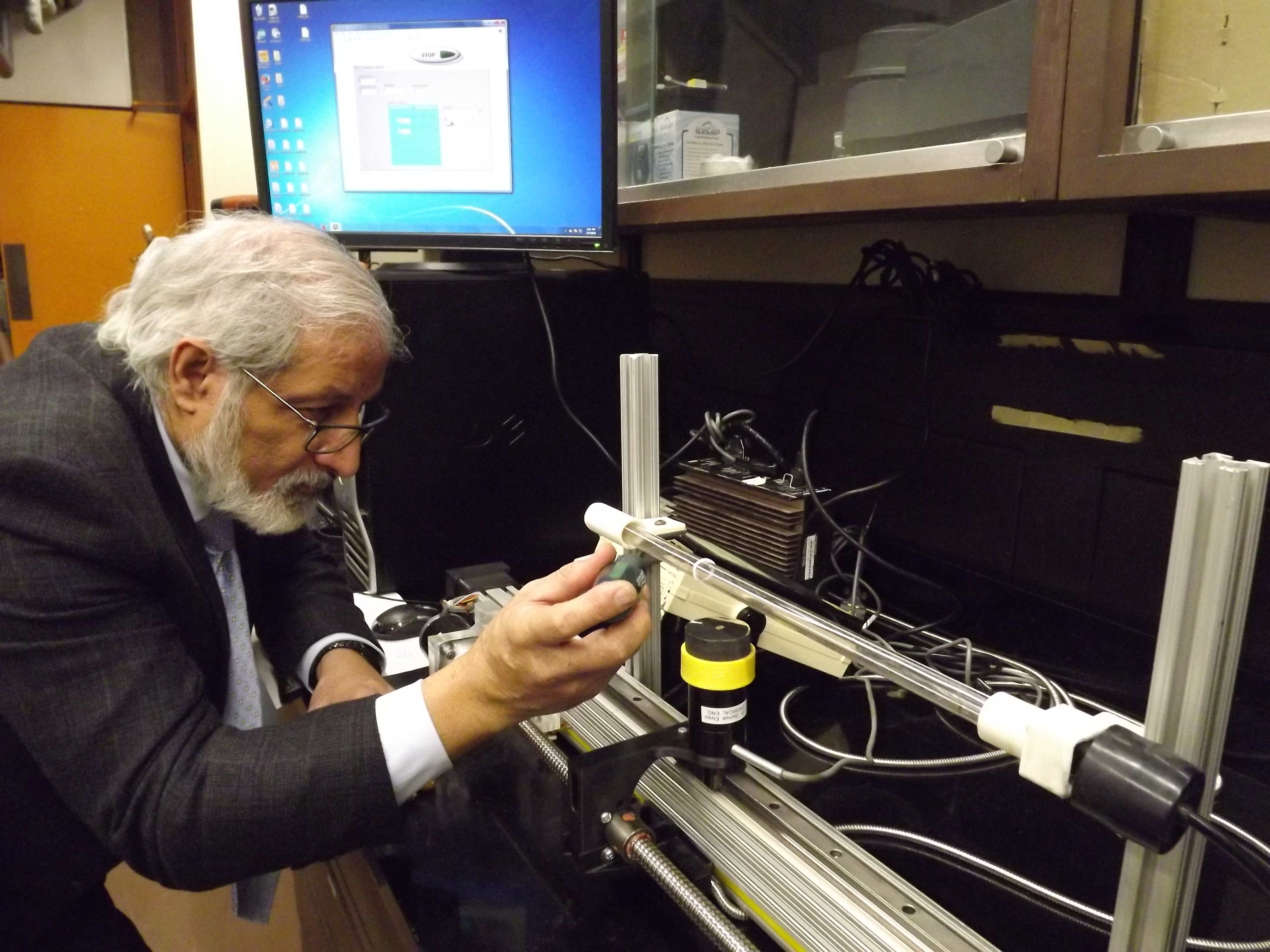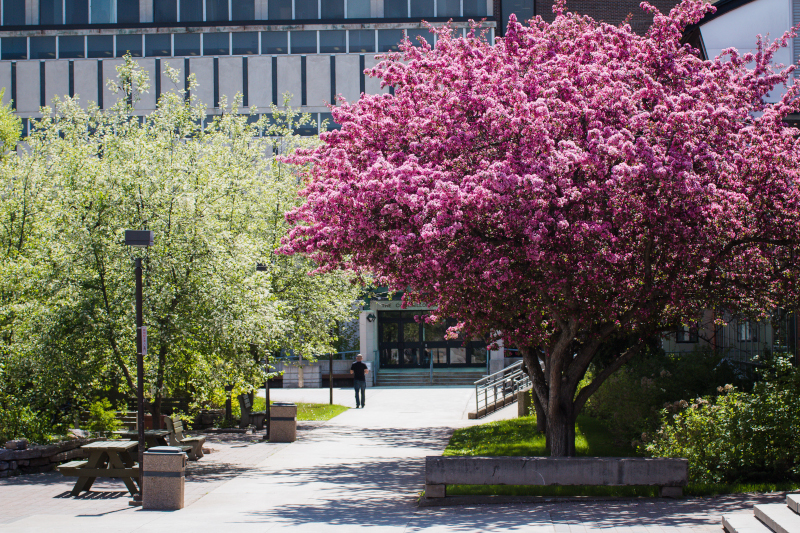Research in Action: Testing shines a light on effectiveness of UV lamps
BY JULIO HELENO GOMES
Originally published in The Chronicle Journal April 28, 2020

Lakehead University professor Dr. Siamak Elyasi makes an adjustment to an instrument he has developed to test ultraviolet lamps.
A study being undertaken by Lakehead University to analyze the performance of ultraviolet lamps used to disinfect wastewater before being released into Lake Superior is moving to the next phase of testing. The aim is not just to determine which lamps perform better, but how to improve the process and optimize costs.
“The City of Thunder Bay is looking to gain a better understanding of the aging process of the ultraviolet lamps,” explains Lindsay Menard, process engineer at the City’s Water Pollution Control Plant. “The intended goal of this project is to optimize the UV system and decrease operating costs.”
The study is a collaboration with Dr. Siamak Elyasi, an associate professor in Chemical Engineering. Elyasi’s broad interest is drinking water and wastewater treatment.
“Having clean water for all human kind is my dream,” Elyasi says. “Clean water prevents many waterborne diseases, which reduces health costs and improves the economy of the people and the prosperity of the country where they live.”
About 70 million litres of wastewater flows to the City’s Water Pollution Control Plant (WPCP) each day. The wastewater is treated through various processes before being discharged into the Kaministiquia River. Preliminary treatment, the first stage of treatment, is where large objects such as rags, paper and wood debris are removed in the bar screens and suspended solids are removed in the grit tanks.
The next treatment process, primary treatment, involves the organic materials and dissolved contaminants settling in clarifiers. Following primary treatment, the wastewater receives secondary treatment. The WPCP uses a secondary treatment process referred to as the Biological Aerated Filter (BAF) process. The BAF process removes carbonaceous biochemical oxygen demand, total suspended solids, phosphorus and ammonia.
The treated wastewater is disinfected with ultraviolet (UV) light to destroy pathogenic bacteria. This process adds UV light, and therefore has no impact on the chemical composition of the wastewater.
Disinfection is the primary method of destroying disease-causing bacteria, to prevent the spread of waterborne diseases, says the City’s Menard. There are various methods of disinfection used by wastewater plants. The best option for the City of Thunder Bay, says Elyasi, is to have the treated wastewater exposed to UV radiation. To that end, from mid-April to mid-October — the “disinfection season” as defined by the Ministry of Environment, Conservation and Parks — the treated wastewater flows through a channel where light from an array of UV lamps damage the cells of micro-organisms that might be in the water. When bacteria, viruses and protozoa are exposed to the UV light, they are rendered incapable of reproducing and infecting.
The system is equipped with more than 700 UV lamps, some costing hundreds of dollars each. The lamps have an expected life of 12,000 hours, but how effective are they as they slowly lose intensity?
Elyasi has developed an instrument to test a variety of lamps, to compare their performance over their life expectancy.
“You have to be very careful the UV lamp has the exact same performance or better,” Elyasi explains. “If they are less expensive, it doesn’t mean they are better, it doesn’t mean they are worse. You have to test them. If they can meet the performance of the original UV lamp, and are less expensive, that’s definitely the best choice.
“That is the goal of every manufacturer and plant operator: to reduce the cost of the operation,” he adds.
The project involved research/thesis student Mrunmayee Ravindra Nikam. Along with reviewing the literature during the development phase, she also performed experimental analysis of UV lamp output and collected data and documented the research findings. Her two years on this project gave her valuable experience in engineering research and designs.
“Throughout this research project I acquired numerous project management skills and further developed my abilities to think analytically, critically and logically,” Nikam says.
She graduated with a Master of Science degree in Environmental Engineering and plans to pursue a doctoral degree. Her ultimate goal is to become an environmental entrepreneur and implement a sustainable approach to preserve the environment.
Elyasi is pleased with the performance of the equipment and hopes it can be deployed at the Water Pollution Control Plant when the technology is proven.
“The UV process is an important step in the treatment of wastewater,” says the City’s Menard. “We are always looking for ways to improve our operations and we believe the work Dr. Elyasi is doing is one way to help us get better.”


